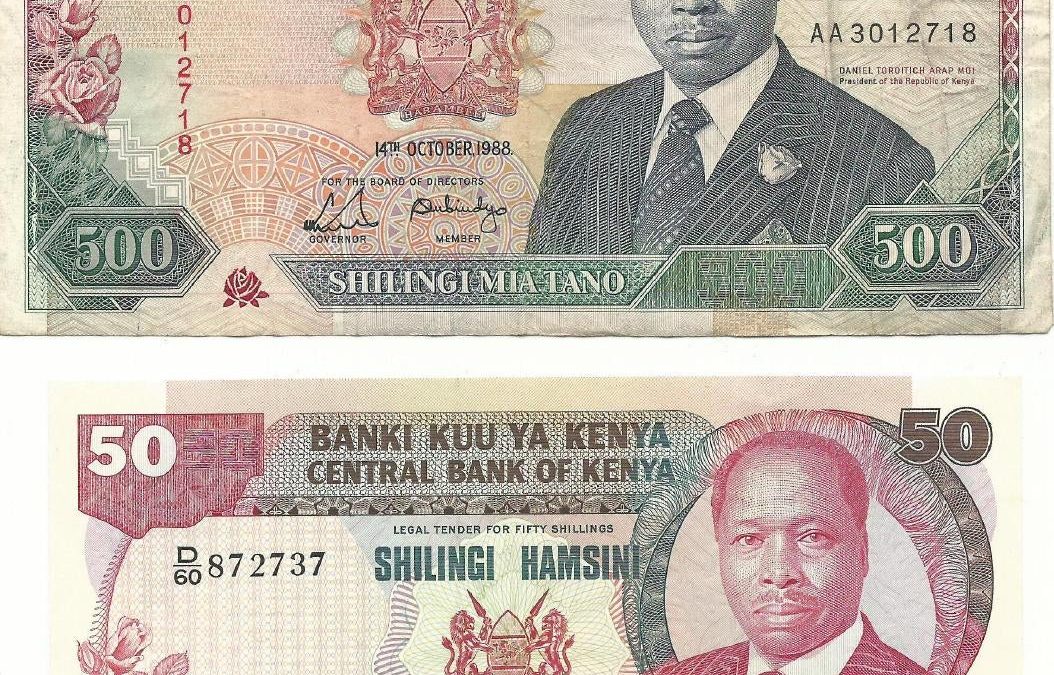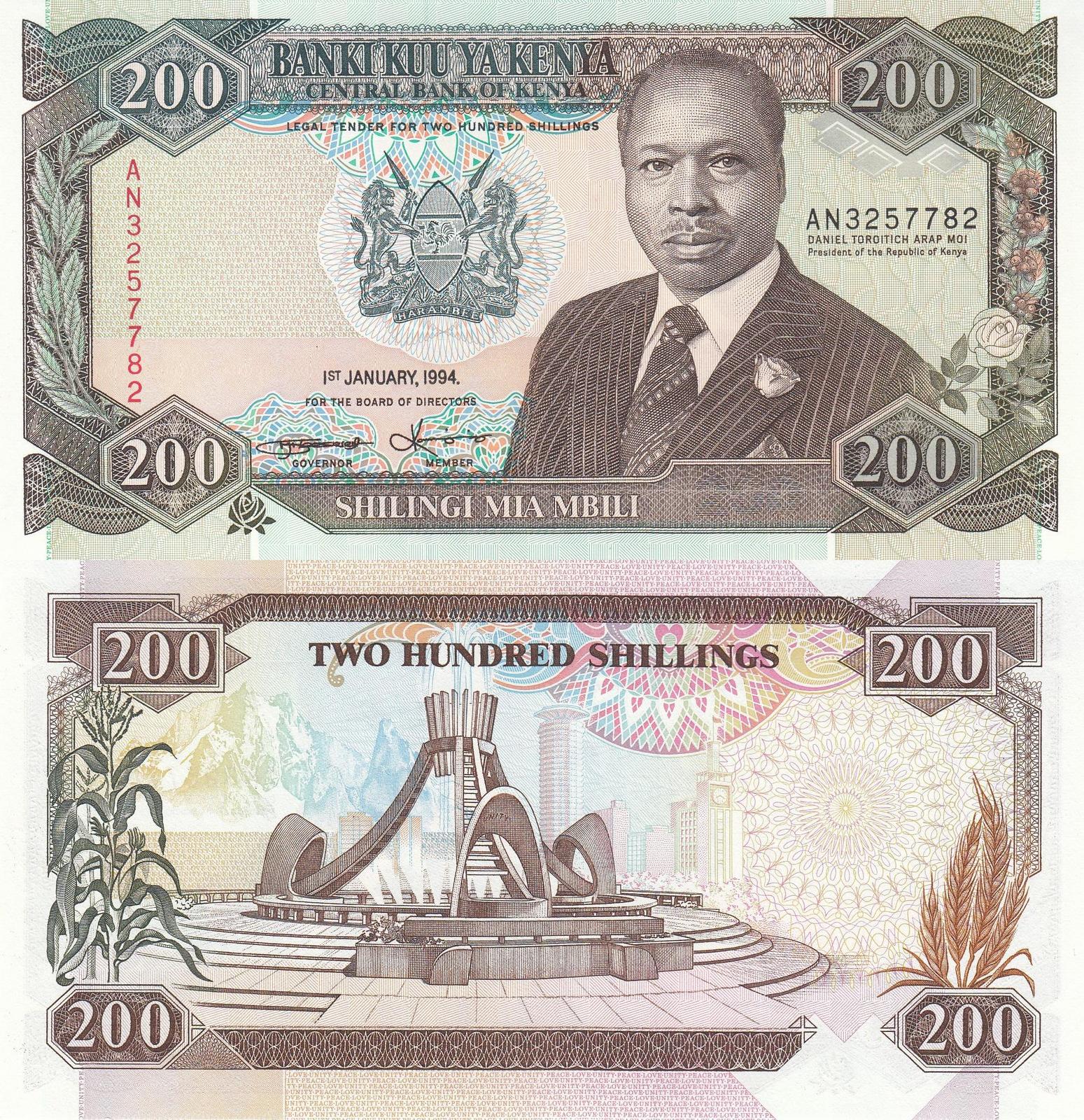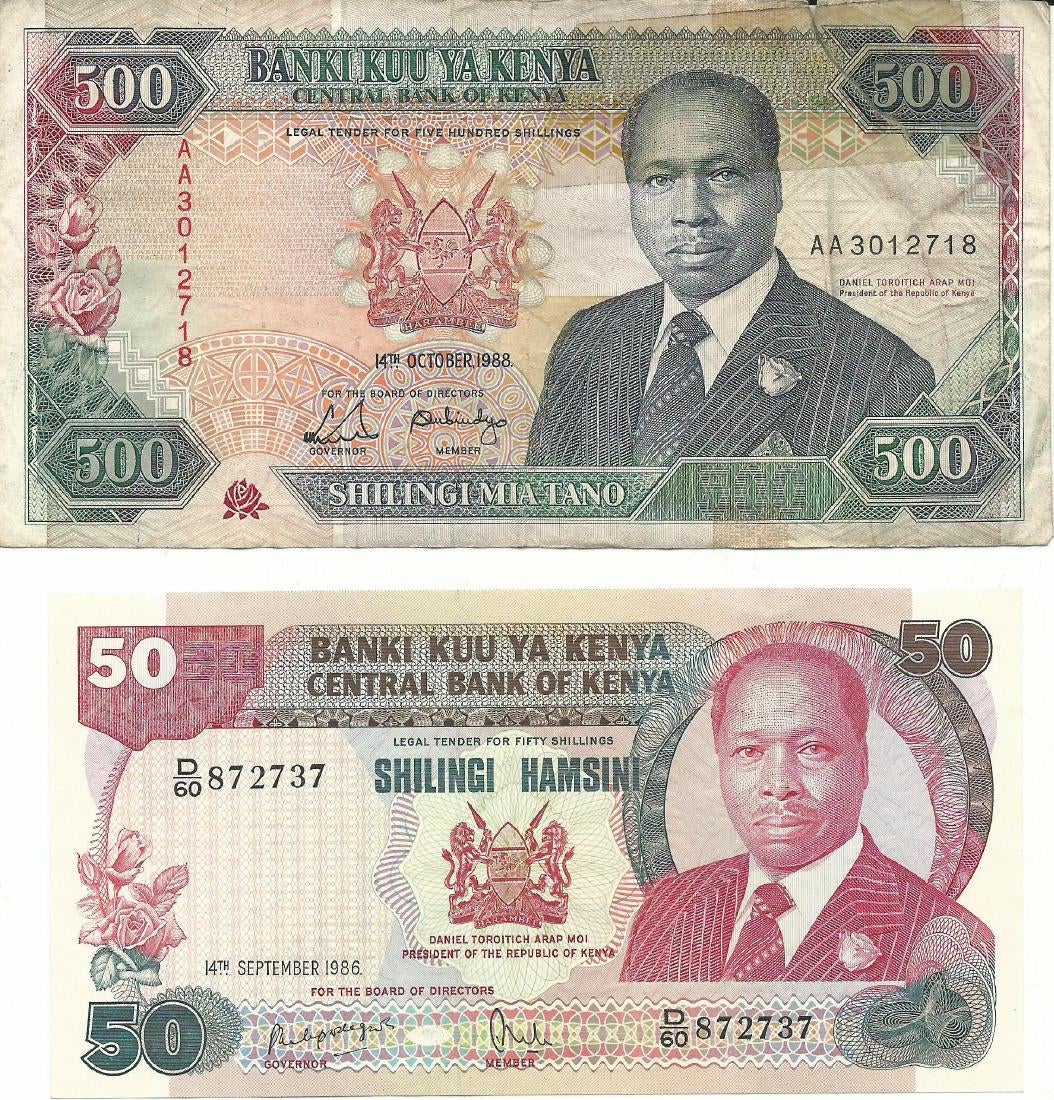Independent Kenya’s Currency

Moi 500 SH note
In March of 1966 the Central Bank of Kenya was established. The East African Currency Board was relieved of its currency management duties and CBK took rein which included issuing of currency notes and coins, as well as providing banking services to the government, commercial banks and other financial institutions. In 1967, EACB bank notes ceased to be legal tender and new coins were issued, bearing the portrait of Kenya’s president Mzee Jomo Kenyatta. The back of the cupro-nickel coins had the Republic of Kenya’s new coat of arms while the notes had diverse scenes of economic activities. EACB currencies were finally demonetized in April 1969.
In 1973 we at the celebration of our first decade of independence CBK issued a commemorative nine-sided 5 Shilling coin. The coin still featured the face of the president and on the reverse side the coat of arms was maintained. However, on it, the words “Ten Years of Freedom” were engraved. This coin would soon be referred to as ‘Kona Tisa’. At the time, 5 shillings was still a note.

Kona Tisa
The following year CBK changed the look of all currency notes, making them smaller than the previous ones and included more security features against counterfeiting. The texts on the notes were in Kiswahili and English.
President Kenyatta died on August 22, 1978 and Daniel Toroitich arap Moi was elected as Kenya’s second president. New notes and coins followed to both commemorate the new President as well as signify the ushering of a new era. The new 20 Shilling note was among the most common during this currency transition. It was blue in colour and quickly acquired a street name ‘Blue’.

Back of the 20 SH note
Kona Tisa was revamped to a seven-sided coin in October of 1985. The new 5 Shilling coin dubbed Kobole also gradually replaced the 5 Shilling note whose circulation lifespan was becoming gradually shorter. A year later, the highest note denomination, a 200 Shilling note, was issued. Some nick-named this note ‘Ruabe’, while others called it ‘Jill’. It was the highest domination title for two years until the 500 Shilling note was introduced. The 500 Shilling note brought about a change in the notes’ appearance, featuring diamond shapes on the denomination boxes.
CBK kept in touch with the world’s trends currency-wise, adopting new, cost-effective compositions. In 1995 a new note was introduced – the 1000 Shilling note. The new note brought about a design change in all other notes in circulation. The back of the 1000 Shilling note featured a herd of elephants, inviting the nick-name ‘Ndovu’. Perhaps because of its amount, other names such as ‘Ngiri’, ‘Thao’ and ‘Ngwanye’ followed. By 1998, there seemed to be a finalization in which denominations would be notes and which would be coins. 1, 5, 10 and 20 Shillings were coins, while 50, 100, 200, 500 and 1000 Shillings were notes.
These seasons of change have been a major part of most of our lives. The nick-names given to our money is a sure sign of our creativity as Kenyans. Tell us about your first cash experience. Do you still have these old notes in your possession, or maybe there’s a story about how you acquired your first 50 bob note… which brings us to the question, when and how did the word bob become synonymous with a shilling?





